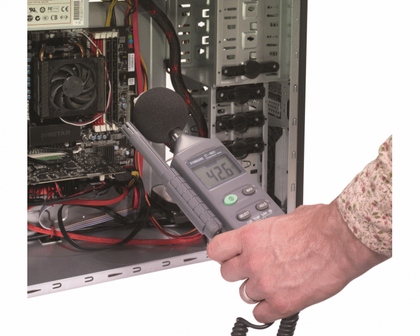Silence is Golden – How to make your PC quieter
Whirs, clicks and rattles can be the bane of an otherwise brilliant PC, we investigate how to make your system more pleasant to live with
PCs can make all kinds of noise, from the whir and whoosh of the fans to the rattles and clicks from the case and hard disk. Thankfully there’s plenty that you can do to prevent your PC from being so unpleasantly loud that it makes it impossible to relax. These tweaks range from free tips like double-checking the fittings and adjusting settings to extravagant methods of reducing noise to an absolute minimum.
The main focus of this feature is to help you identify the noisiest components in your PC and suggest a range of ways that will make them quieter. First off, though, we need a bit of background reading on how sounds are measured, and the counter-intuitive way in which multiple noise sources interact.
THE SCIENCE OF SOUND
When people talk of noise levels it’s usually in terms of decibels (dB), but these measurements are riddled with potential for confusion. For starters, a decibel is a relative measurement, so to say that a sound is 30dB is meaningless unless we define what it’s compared to. Common practice is set 0dB as the threshold of human hearing – the quietest sound we can detect.
Then there’s the issue of weighting: our ears are more sensitive to certain frequencies than others. Measurements are usually made in dBA, which uses a weighting curve to take into account the perceived loudness of different frequencies. The distance at which sounds are measured also has a huge bearing on results. 1m from the sound source is a common standard, but unless it’s expressly stipulated, there’s no reason to assume it’s the case for a given measurement. Because of all these variables, it’s best to take quoted dB ratings with a pinch of salt. All the measurements we quote in this article are in dBA measured at 1m.
 Rather than relying on manufacturers specifications, we used our own measurements to check progress on the quietening of our test PC
Rather than relying on manufacturers specifications, we used our own measurements to check progress on the quietening of our test PC
Another confusing aspect to the decibel scale is that it’s logarithmic, not linear. Add two noise sources of 30dBA together and you don’t get a 60dBA noise. Instead, the result is 33dBA noise. A jump of 3dBA doubles the energy, but the way we perceive sound means it doesn’t seem twice as loud. Opinions vary, but it’s widely regarded that an increase of 10dBA is perceived as being twice as loud, even though this equates to about 10 times the energy.
The flip side of this anomoly is that, if we take four noisy fans and switch three off, the perceived loudness doesn’t drop to a quarter. The result is more like three quarters the perceived volume.
That’s why it’s essential to take a holistic approach when making a quiet PC. There’s little point in replacing some noisy fans with quiet ones but leaving others whining away. Meanwhile, after replacing the noisiest component, you may find that various others that were previously masked now sound surprisingly loud. It’s also worth bearing in mind that us humans are quite good at ignoring continuous sounds, but changing ones such as clicking hard disks or fans that change speed are harder to ignore.
That’s enough time spent in the classroom. It’s time to open up the PC and get to work.










